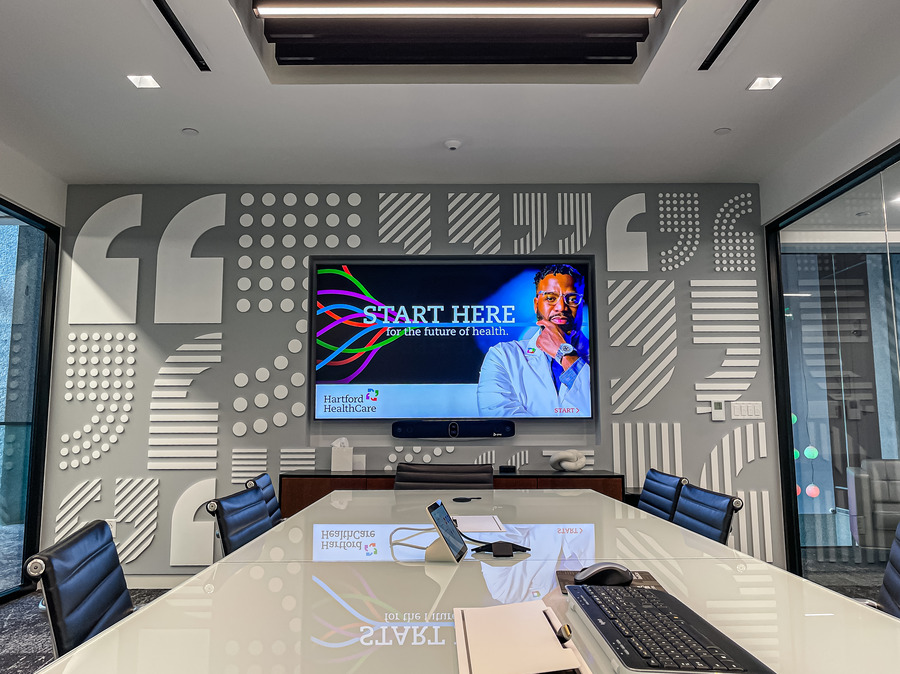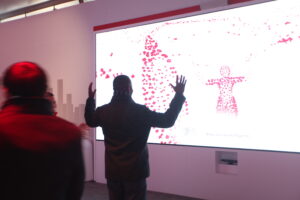
The Keys to Designing Systems That Won’t Let You Down
When you hear the term mission critical, it implies something that is vitally important, like a system or a tool that cannot fail. Perhaps nowhere is this more true than in healthcare. Now, you might think, of course, operating rooms, hospital information systems, patient monitoring equipment, and similar infrastructure are mission-critical, as failures at the wrong time can mean cascading problems. But what about more general-purpose tools, like conference room AV systems? Typically, these systems rely on the same commercial AV solutions used in less critical environments. In Boston, home to some of America’s best hospitals and doctors, advanced healthcare depends on timely and effective communication. So, how do you use familiar AV solutions and strengthen them for critical healthcare environments? Let’s explore how McCann Systems approaches this.
SEE ALSO: Case Study: Hartford Healthcare
System Design and Redundancy Aspects
For healthcare environments, reliable AV conferencing system design begins with minimizing potential points of failure. Unlike some commercial AV deployments, mission-critical healthcare systems require enterprise-grade components and redundant architectures. For example, this means utilizing hardware-based solutions, such as Cisco codecs, that are built to high telecommunications standards rather than relying on software-based alternatives that may be more prone to crashes or performance issues. Key design elements include redundant power supplies for equipment racks housing critical components like codecs and video distribution systems. Signal flow is intentionally streamlined, eliminating unnecessary conversion steps or routing complexities that could introduce latency or failure points.
Many of the design principles mirror those used in broadcast systems, where failures are costly. Think of a live network news broadcast or a sports contest, where technical failures are rare. Redundancy, high-performance equipment, and system monitoring are all part of the design. In healthcare, the goal is to match the reliability standards of other critical infrastructure while maintaining the familiar usability of a Microsoft Teams, Zoom, or WebEX conferencing solution.
Grand Rounds: A Critical Use Case
The evolution of grand rounds in hospital settings perfectly illustrates why mission-critical AV has become essential in healthcare. These sessions, where medical professionals teach, share insights, and collaborate on complex cases, now frequently connect specialists across multiple locations. When physicians discuss time-sensitive cases or analyze detailed medical imaging, there’s no room for technical failures or poor audio/video quality.
Modern grand rounds require the integration of high-resolution displays for medical imagery, broadcast-quality cameras for clear views of presenters and participants, and premium audio systems that ensure every critical detail is heard clearly. The system must perform equally well for in-person attendees and remote participants, maintaining consistent quality whether specialists are joining from other hospitals, research facilities, or their offices. The hybrid nature of grand rounds today has become an important way for healthcare facilities to leverage expertise across their networks when time is of the essence.
Proactive Monitoring and Management
Maintaining mission-critical AV systems requires a different approach from standard commercial AV maintenance. Advanced monitoring software continuously tracks the status of every system component, from codecs and cameras to microphones and displays. This proactive approach allows technical teams to identify and address potential issues before they impact critical healthcare communications.
Remote management capabilities are particularly important in healthcare environments where system downtime can affect patient care. Technical staff can restart devices, push software updates, and diagnose problems without entering clinical spaces. Healthcare facilities can choose to manage these systems internally or partner with AV integrators for managed services. Either way, the system architecture must support comprehensive monitoring and rapid response capabilities to maintain the high-reliability standards healthcare demands.
Security
In healthcare environments, AV systems must meet stringent security requirements while maintaining their mission-critical reliability. Video and audio streams should be encrypted to protect patient health information (PHI) and ensure HIPAA compliance. Remote access, whether for clinical communication or system maintenance, requires secure authentication protocols. These security measures must be integrated into the AV system’s design, ensuring that the system does not compromise either patient information or performance and reliability.
Implementing mission-critical solutions requires specialized expertise, whether you’re planning new healthcare facilities or upgrading existing AV infrastructure. Contact McCann Systems to learn how we can help design and maintain AV systems that meet your facility’s critical communication needs. Use the chat button below to start the conversation, or fill out our online contact form. We look forward to connecting!





